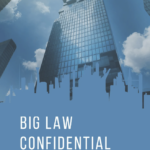Just Calling A Product 'Artificial Intelligence' Isn't Good Enough
The many, many definitions of AI Contract Review.
 You wouldn’t point to a banditry of chickadees — yes, that’s what they’re called — hanging out with a flock of ostriches and just say “look, a bunch of birds.” It’s technically true, of course, but one is an adorable passerine songbird and the other is basically a full-on velociraptor that really let itself go over the last 70 million years or so. Forget about how the ornithological eggheads parse birds little boxes, this is a distinction that even Jane Q. Public needs to be able to make at a glance because one of the two can absolutely kill you.
You wouldn’t point to a banditry of chickadees — yes, that’s what they’re called — hanging out with a flock of ostriches and just say “look, a bunch of birds.” It’s technically true, of course, but one is an adorable passerine songbird and the other is basically a full-on velociraptor that really let itself go over the last 70 million years or so. Forget about how the ornithological eggheads parse birds little boxes, this is a distinction that even Jane Q. Public needs to be able to make at a glance because one of the two can absolutely kill you.
So why are we still lumping different transactional tools under the “AI Contract Review” label?
We all do it. The companies themselves do it because buyers rarely cast a narrow net when researching a new product. The journalists do it because the companies do it. And then the firms and legal departments do it because they don’t know the nuanced differences between these solutions because the companies and the journalists aren’t highlighting differences and the vicious circle continues.

What Do Millennials Think Of Law Firm Life?
Dan Broderick of Blackboiler thinks it’s time we change that and start informing the market that “AI Contract Review” may be accurate, but it doesn’t provide the customer with enough information. “I don’t fault any of these tools because the benefit of having “AI” as your descriptor is a benefit but it creates confusion.”
He thinks it’s time for a new taxonomy. “We feel like AI contract review space means so many things to so many different people. And doesn’t describe in any way what the function of the tools are. BlackBoiler and Kira both there but not the same.”
That’s a fair observation, but how can one categorize these providers. Broderick thinks there are five broad categories of tasks in the space.

Credit to BlackBoiler and Artificial Lawyer
Sponsored

The Global Legal News You Need, When You Need It

Stuck Drafting A Tough Brief? This Tool Can Help.

Legal Knowledge Management To Drive Dealmaking

The Global Legal News You Need, When You Need It
* Contract Markup: Automatically redlines documents based on company standards
* Comparison: To either the counterparty or the industry standard
* Semantic Similarity: Aids the user in finding places to insert internally preferred language
* Classification & Extraction: Scans the document to identify the significance of paragraphs based on context and extracts key data points
* Risk Rating: Pretty self-explanatory… it scores drafts based on risk.
You could split the comparison category naturally into two and classification and extraction could be broken up, but whether it’s five, six, or seven species of pre-execution contract tools, the point remains that there are different tasks out there and tools tailored to each.
And it’s not just about educating the market to know the differences between products, but about informing customers of the capabilities out there. If a buyer thought the universe of AI Contract Review was limited to comparing drafts to industry standard, they may not even realize that they could be using a risk rating tool right now.
We’ve come a long way from legal AI being a barely understood hype vehicle. The industry’s rhetoric needs to catch up with the tech.
Sponsored

What Do Millennials Think Of Law Firm Life?

 Joe Patrice is a senior editor at Above the Law and co-host of Thinking Like A Lawyer. Feel free to email any tips, questions, or comments. Follow him on Twitter if you’re interested in law, politics, and a healthy dose of college sports news. Joe also serves as a Managing Director at RPN Executive Search.
Joe Patrice is a senior editor at Above the Law and co-host of Thinking Like A Lawyer. Feel free to email any tips, questions, or comments. Follow him on Twitter if you’re interested in law, politics, and a healthy dose of college sports news. Joe also serves as a Managing Director at RPN Executive Search.








